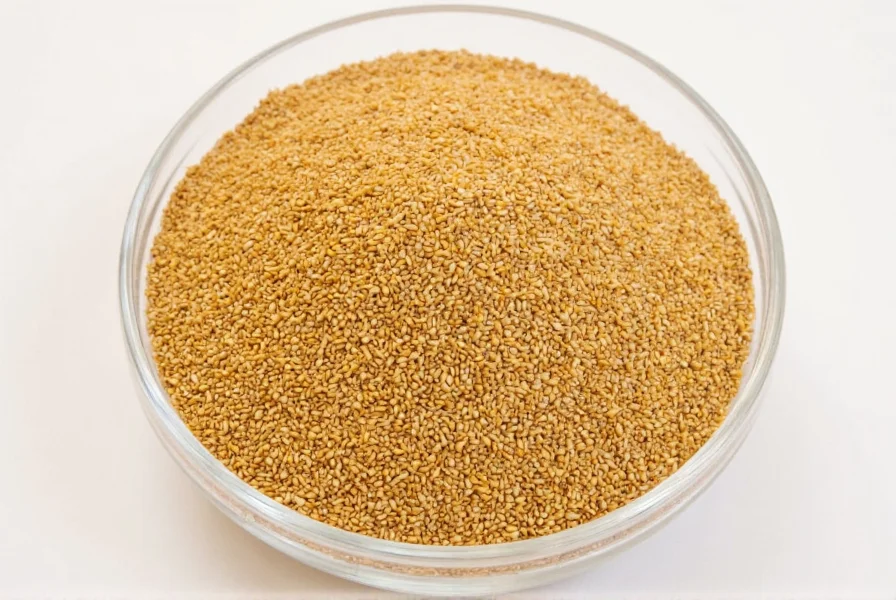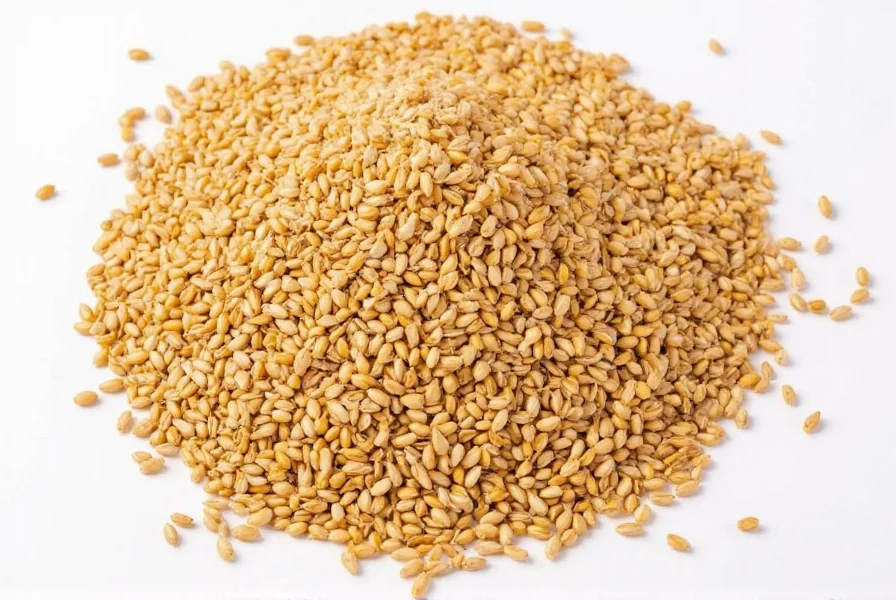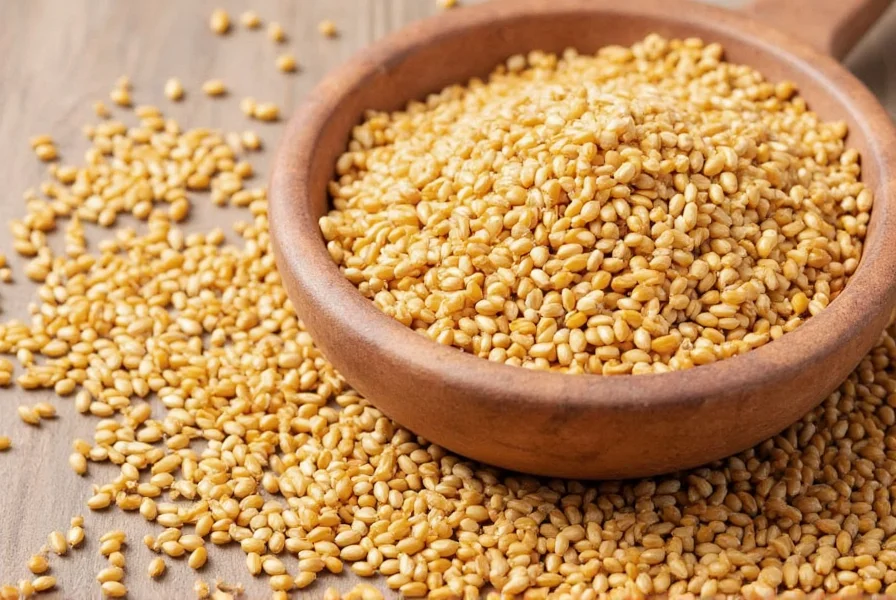Fenugreek seeds, scientifically known as Trigonella foenum-graecum, have been valued for thousands of years across multiple cultures for their unique flavor profile and potential health properties. These tiny, hard seeds measure approximately 3-5 millimeters in length and possess a characteristic rectangular shape with a deep groove running along one side. When raw, they emit a strong, somewhat bitter aroma reminiscent of celery or burnt sugar, but transform into a warm, nutty, maple-like flavor when toasted or cooked.
Botanical Background and Historical Significance
Native to the Mediterranean region and Southern Asia, fenugreek cultivation dates back to ancient Egyptian times, where seeds were found in tombs dating to 1500 BCE. The plant itself is an annual herb that grows to about two feet tall, producing white flowers and long pods containing 10-20 seeds each. The name "fenugreek" derives from the Latin faenum graecum, meaning "Greek hay," reflecting its historical use as animal fodder.
Physical Characteristics and Flavor Profile
Fenugreek seeds have several distinctive physical properties that help identify them:
| Characteristic | Description |
|---|---|
| Color | Golden to amber-brown when raw, deepening to reddish-brown when roasted |
| Shape | Diamond-shaped with a deep longitudinal groove |
| Size | Approximately 3-5 mm in length |
| Texture | Hard outer shell, slightly oily interior |
| Raw flavor | Bitter, with notes of celery and burnt sugar |
| Processed flavor | Nutty, maple-like, caramelized when toasted |
The seeds' unique flavor chemistry comes from compounds like sotolone, which creates that distinctive maple syrup aroma when heated. This characteristic makes fenugreek seeds valuable in both savory and sweet applications across global cuisines.

Culinary Applications Worldwide
Chefs and home cooks utilize fenugreek seeds in diverse ways across different culinary traditions. In Indian cuisine, they're essential in curry blends, pickles, and as a key component in panch phoron (a five-spice mix). Middle Eastern cooks incorporate them into breads and spice rubs, while in Egypt, fenugreek seeds flavor helba, a popular tea.
When working with fenugreek seeds, proper preparation enhances their flavor:
- Dry roasting: Toast seeds in a dry pan for 2-3 minutes until fragrant and slightly darker
- Soaking: Soak overnight to reduce bitterness for sprouting or medicinal uses
- Grinding: Process toasted seeds into powder for spice blends
- Tempering: Heat in oil at the beginning of cooking to release flavors into dishes
Understanding how to use fenugreek seeds in cooking prevents their natural bitterness from overwhelming dishes. Start with small amounts (1/4 to 1/2 teaspoon per serving) and adjust to taste, as their flavor intensifies during cooking.
Nutritional Composition and Potential Health Benefits
Fenugreek seeds boast an impressive nutritional profile. A single tablespoon (6.7g) contains approximately:
- Calories: 36
- Protein: 3g
- Dietary fiber: 3g
- Iron: 20% of daily value
- Magnesium: 14% of daily value
- Manganese: 21% of daily value
Research suggests several potential health benefits associated with fenugreek consumption, though more extensive human studies are needed. Many people seek information about the benefits of fenugreek seeds for various wellness purposes. Current evidence indicates possible support for:
- Blood sugar regulation through compounds like 4-hydroxyisoleucine
- Digestive health due to high fiber content and mucilage
- Lactation support for nursing mothers (though consult healthcare providers)
- Skin health when applied topically in traditional preparations
It's important to note that while traditional medicine systems have used fenugreek for centuries, modern scientific validation for many claimed benefits remains limited. Always consult healthcare professionals before using fenugreek seeds for medicinal purposes, especially if you have medical conditions or take medications.
Storage and Shelf Life Considerations
Proper storage maintains fenugreek seeds' flavor and potency. Keep whole seeds in an airtight container away from light and heat. Stored correctly, they retain optimal flavor for 1-2 years. Ground fenugreek loses potency more quickly and should be used within 6 months. Refrigeration can extend shelf life in humid climates.
Differentiating Fenugreek Seeds from Similar Ingredients
Many people confuse fenugreek seeds with other spices. Understanding the difference between fenugreek seeds vs methi seeds is straightforward—they're actually the same thing. "Methi" is simply the Hindi and Urdu word for fenugreek.
Fenugreek seeds are sometimes mistaken for:
- Cumin seeds: Smaller, darker, and more crescent-shaped with a different flavor profile
- Fennel seeds: Longer, greener, with a pronounced anise/licorice flavor
- Mustard seeds: Rounder, available in yellow, brown, or black varieties

Safety Considerations and Potential Side Effects
While culinary use of fenugreek seeds is generally safe for most people, understanding potential fenugreek seeds side effects is important. Some individuals may experience:
- Digestive discomfort when consumed in large quantities
- Allergic reactions, particularly in people sensitive to peanuts or chickpeas
- Lowered blood sugar levels, which requires monitoring for diabetics
- Potential interactions with blood-thinning medications
Pregnant women should avoid medicinal amounts of fenugreek as it may stimulate uterine contractions. Always consult healthcare providers before using fenugreek seeds for therapeutic purposes.
Incorporating Fenugreek Seeds into Your Kitchen
For those wondering what are fenugreek seeds used for beyond traditional applications, modern culinary uses include:
- Adding depth to vegetarian and vegan "bacon" flavorings
- Enhancing homemade maple syrups and desserts
- Creating complex spice rubs for meats and vegetables
- Boosting nutritional content in smoothies (when sprouted)
- Flavoring artisan breads and crackers
Start experimenting with small amounts to develop your palate for this distinctive spice. Remember that toasted fenugreek seeds offer a completely different flavor profile than raw seeds, expanding their culinary versatility.
Conclusion
Fenugreek seeds represent one of the world's oldest cultivated spices, offering both distinctive culinary properties and potential wellness benefits. Their unique maple-like flavor when cooked makes them invaluable in global cuisines, while their nutritional composition supports their traditional medicinal uses. Whether you're exploring where to buy fenugreek seeds for cooking or researching their potential health applications, understanding their proper use ensures you can safely enjoy this ancient ingredient's benefits.
Frequently Asked Questions
What's the difference between fenugreek seeds and methi seeds?
There is no difference between fenugreek seeds and methi seeds—they are the same thing. "Methi" is simply the Hindi and Urdu word for fenugreek. The plant's scientific name is Trigonella foenum-graecum, and it produces these distinctive golden-brown, diamond-shaped seeds used worldwide in cooking and traditional medicine.
Can I eat fenugreek seeds raw?
While you can technically eat fenugreek seeds raw, they have a pronounced bitter taste that many find unpleasant. Most culinary traditions recommend toasting, soaking, or cooking the seeds to mellow their bitterness and develop their characteristic nutty, maple-like flavor. For medicinal uses, people often soak or sprout the seeds to reduce bitterness while maintaining potential health benefits.
How do I use fenugreek seeds in cooking?
To use fenugreek seeds in cooking, start by dry-toasting them in a pan for 2-3 minutes until fragrant. You can then use them whole in tempering (tadka), grind them into powder for spice blends, or add directly to curries and stews. For best results, begin with small amounts (1/4 to 1/2 teaspoon per serving) as their flavor intensifies during cooking. They pair well with other spices like cumin, coriander, and turmeric in Indian cuisine, and can even enhance baked goods when used sparingly.
Are fenugreek seeds good for hair growth?
Traditional medicine systems have used fenugreek seeds for hair health for centuries, and some preliminary research suggests potential benefits. The seeds contain proteins and nicotinic acid that may support hair follicle health when applied topically as a paste or oil infusion. However, scientific evidence for fenugreek seeds specifically promoting hair growth in humans remains limited. Most studies are preliminary or conducted on animals, so more research is needed to confirm these effects in humans.
How should I store fenugreek seeds?
Store whole fenugreek seeds in an airtight container away from light, heat, and moisture. Properly stored in a cool, dark pantry, they maintain optimal flavor for 1-2 years. Ground fenugreek loses potency more quickly and should be used within 6 months. In humid climates, consider refrigerating your seeds to extend their shelf life. Always check for any off smells or discoloration before use, as this indicates the seeds have gone rancid.











 浙公网安备
33010002000092号
浙公网安备
33010002000092号 浙B2-20120091-4
浙B2-20120091-4